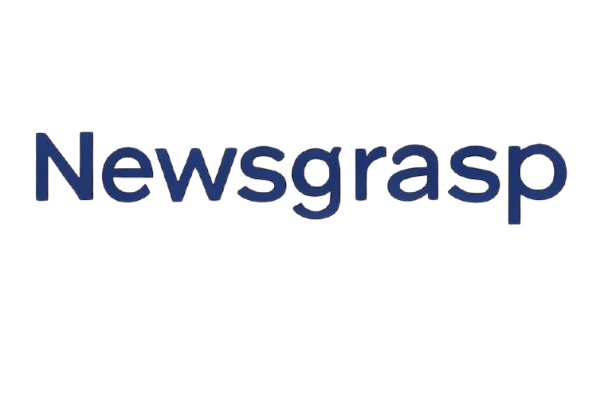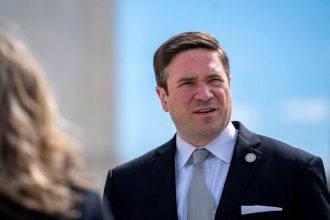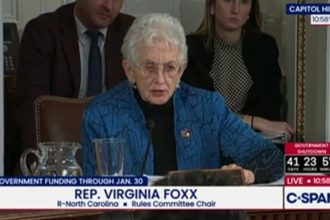The left’s preeminent dark money hub dished out nearly $311 million in 2024 backing progressive causes like abortion and voting rights, climate change and more, according to new tax filing shared first with POLITICO.
The spending was more than double what the nonprofit Sixteen Thirty Fund steered to liberal groups and causes a year prior. But it was less than its total in 2020, when the group’s all-time high of $410 million in outlays helped sweep Democrats to unified control of Washington.
Though Democrats suffered “devastating” losses of the White House and Senate in 2024, Sixteen Thirty Fund President Amy Kurtz pointed to last week’s Democratic victories in the off-year elections as affirmation of her group’s work.
This month’s election was a moment of “both validation and motivation,” Kurtz wrote, adding that “progress is built over years, not cycles, and that sustained advocacy, not just electoral wins, drives enduring change.”
Sixteen Thirty Fund’s massive spending last year was made possible by a fundraising haul of more than $282 million, tax filings show — an increase of over $100 million compared to 2023.
As a 501(c)4 group, Sixteen Thirty Fund is not required to disclose its donors, though past donors have included the nonprofit led by Swiss billionaire Hansjörg Wyss as well as the philanthropic network started by megadonor George Soros. Even though the group has said it supports reforms — backed by many on the left — that would require more transparency into nonprofits, Sixteen Thirty Fund’s fundraising and spending prowess signals that opaque and deep-pocketed left-leaning political funding hubs aren’t going anywhere.
More than 60 percent of Sixteen Thirty Fund’s revenues in 2024 came from just five benefactors who cut eight-figure checks to the group, including one who gave $58.9 million and another who gave $51.4 million, according to the filings.
The fund reported pouring almost $63 million into super PACs and other groups for political purposes, in addition to dropping more than $15 million on Sixteen Thirty Fund’s own direct political spending. That included $6.7 million to Your Community PAC, a super PAC that became a major last-minute spender in support of former Vice President Kamala Harris and Democratic House and Senate candidates in red states.
Sixteen Thirty Fund also gave to the main super PACs supporting House and Senate Democrats and the Harris campaign. Roughly another $2 million went to Retire Career Politicians and Civic Truth Action each, super PACs that spent heavily to boost the independent challenger to Nebraska GOP Sen. Deb Fischer as well as third party presidential candidates that could’ve eaten into President Donald Trump’s votes.
The group’s single biggest expenditure by far was a nearly $28 million grant for the liberal voter registration and turnout coalition America Votes. Sixteen Thirty Fund also doled out tens of millions of dollars backing state ballot initiatives, including $14 million for an unsuccessful campaign to expand abortion rights in Florida and $6 million for a failed anti-gerrymandering push in Ohio.
North Fund, another liberal dark money network managed by the consultancy Arabella Advisors, received $6.8 million, while the progressive advocacy group Unrig Our Economy got $5.1 million.
The dark money group awarded a slew of seven- and eight-figure grants to various climate organizations including the GOTV group League of Conservation Voters ($11.8 million), clean energy business group Advanced Energy United ($3.5 million), Climate Equity Action Fund ($6.9 million) and climate and labor coalition Climate Jobs National Resource Center Action Fund ($5.8 million).
Other spending by Sixteen Thirty Fund remains unknown, thanks to its model of fiscal sponsorship. It allows the nonprofit to operate as an incubator for new political advocacy groups like Protect Our Care Action, which has pushed back on conservative health care policies; Galvanize Action, which seeks to juice civic engagement among moderate women in the suburbs and rural areas; and Paid Leave for All.
That model is “built for this moment,” Kurtz said in her blog post, allowing “flexibility, speed, and coordination in an increasingly dynamic and high-stakes environment.”









